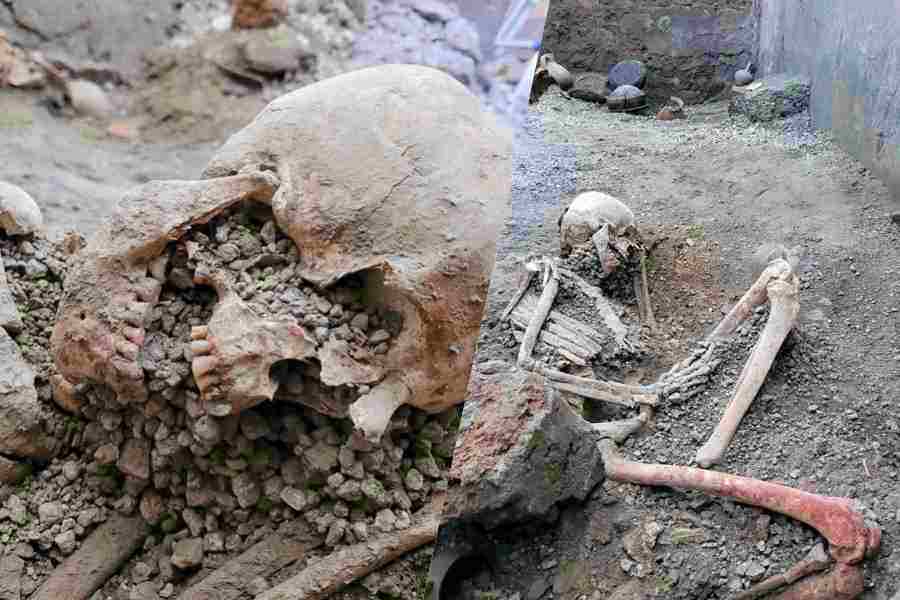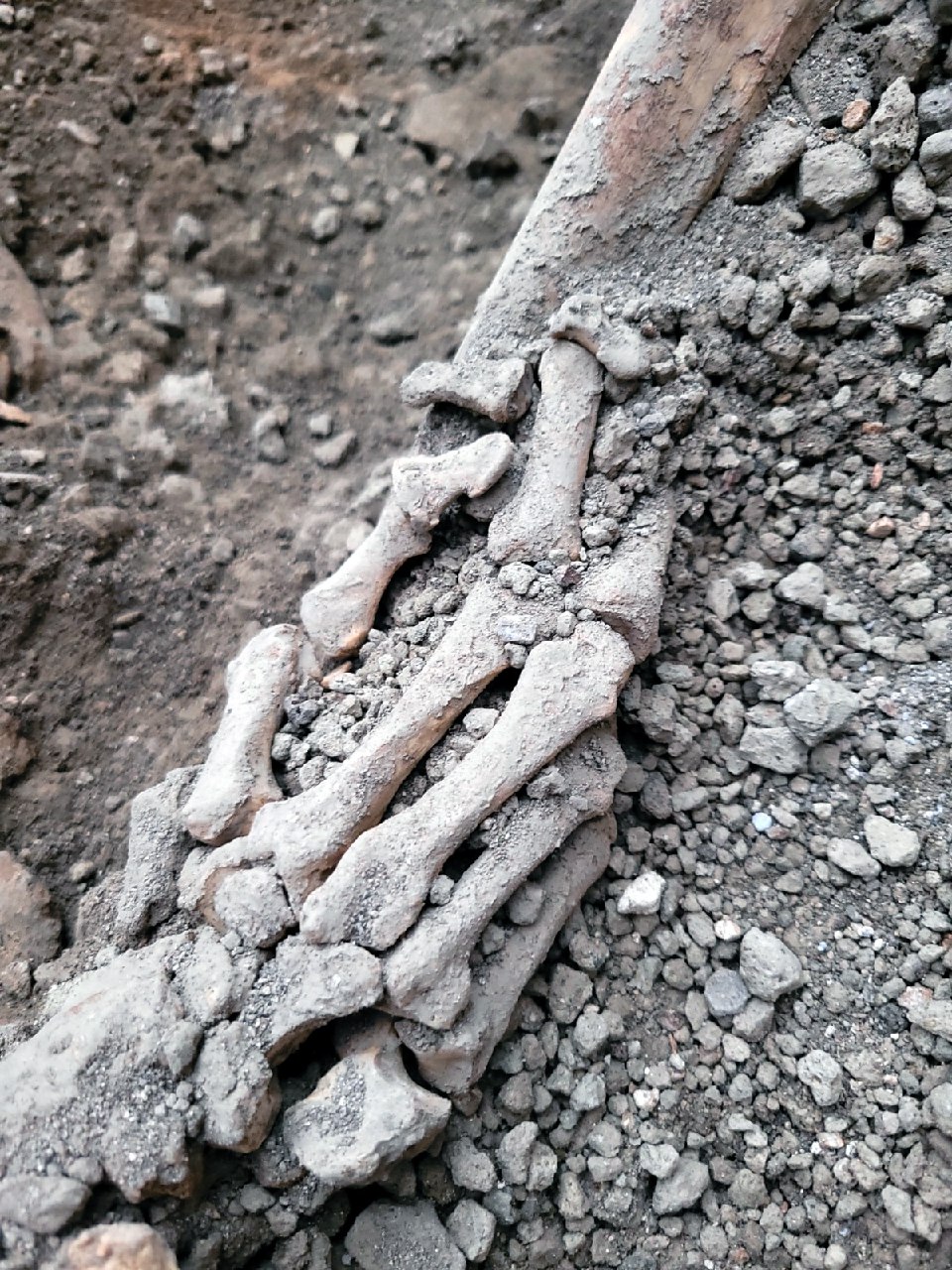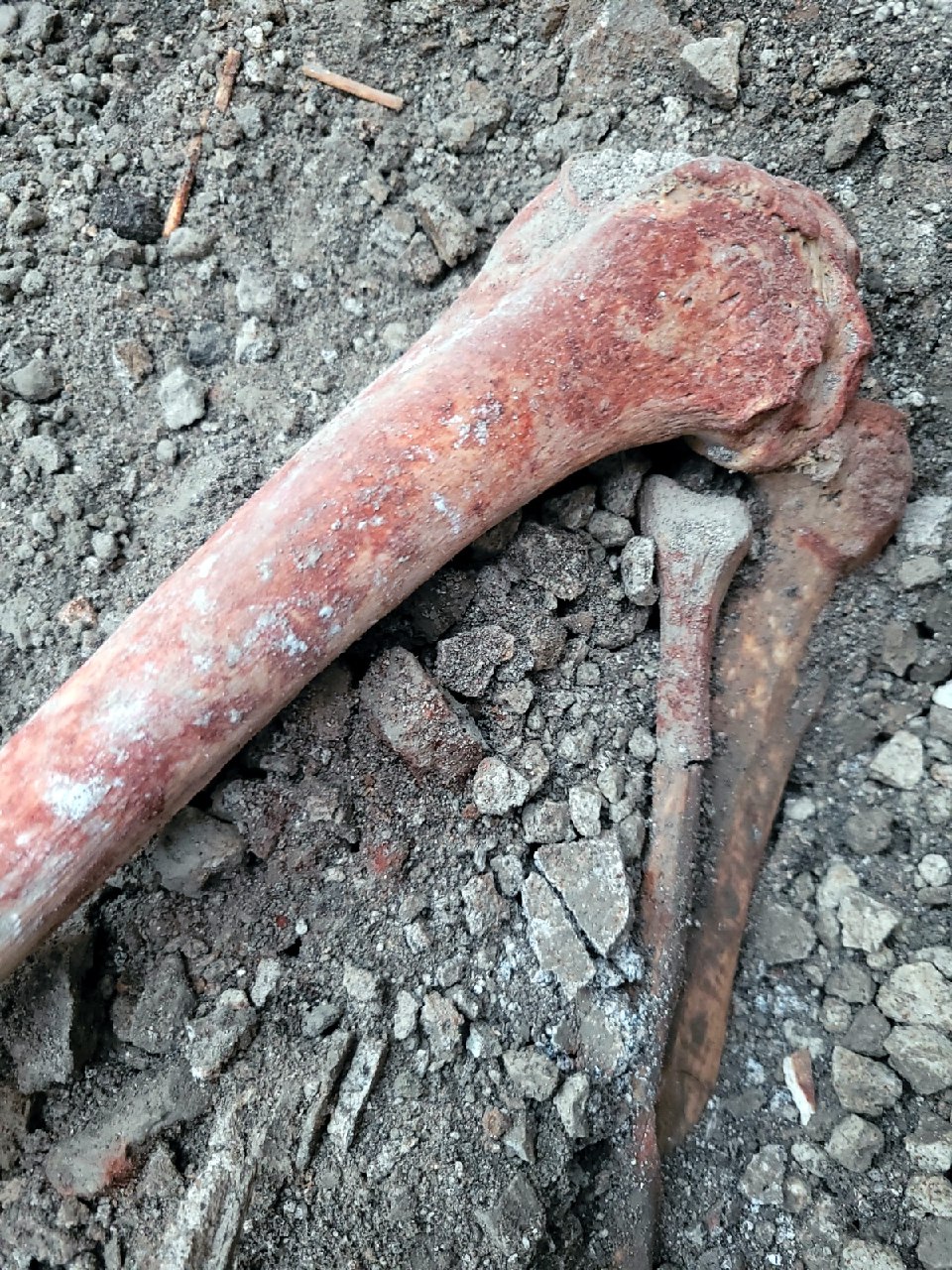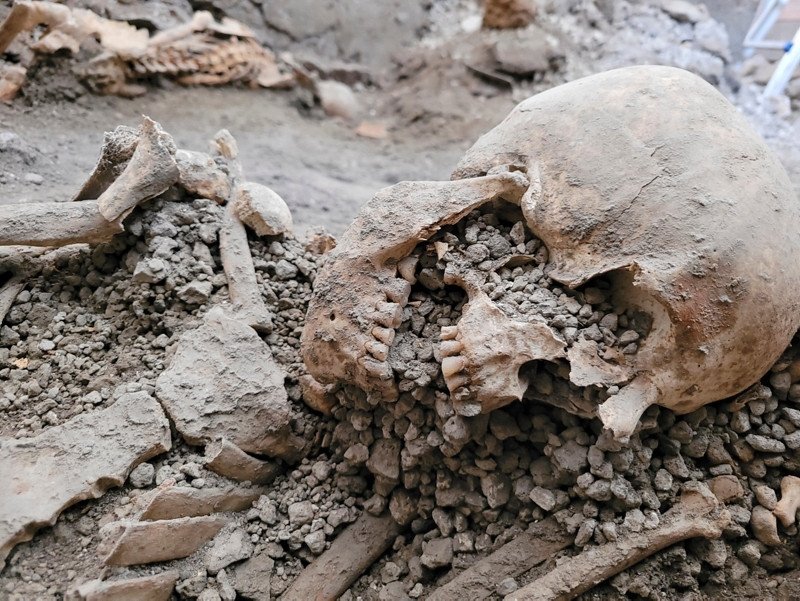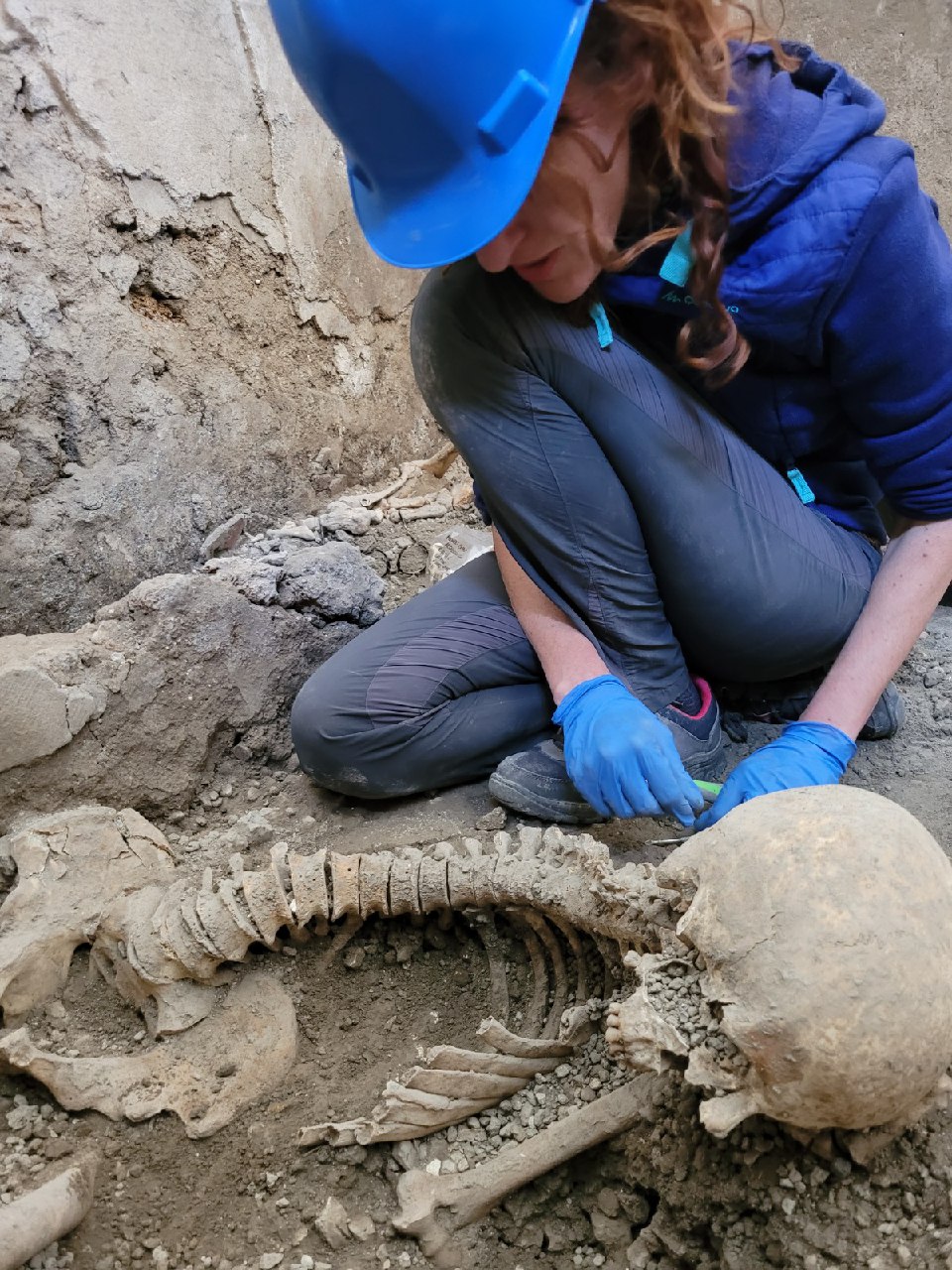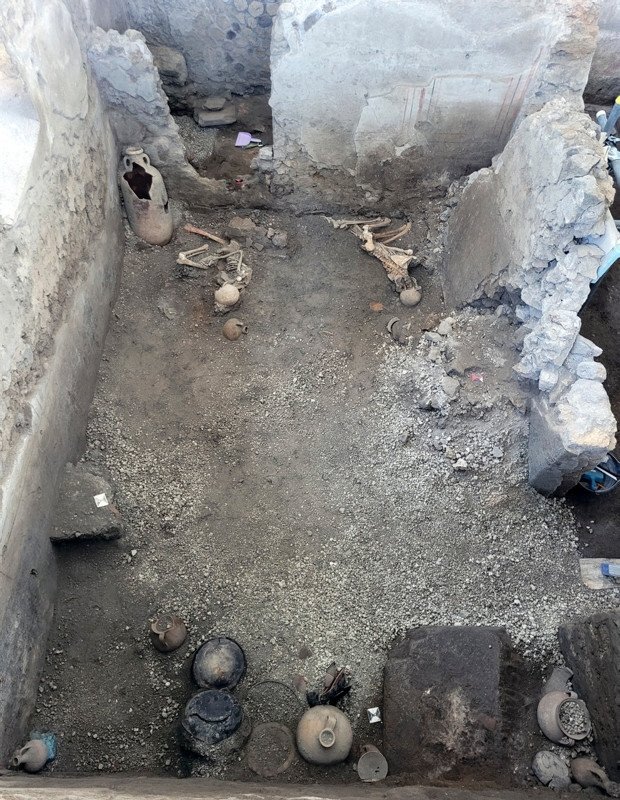Sun 21 May 2023:
It was not just the eruption that led to the death of the inhabitants of Pompeii but also the simultaneous earthquake
Turmoil, confusion, attempted escapes and, in the meantime, an earthquake, showers of pumice, volcanic ash and hot gases. This was the inferno of the eruption of AD 79, the living hell in which the inhabitants of the ancient city of Pompeii found themselves, including the two victims whose skeletons were recently discovered during the excavation of the insula of the House of the Chaste Lovers.
They were the victims of an earthquake that accompanied the eruption, discovered beneath a wall that had collapsed between the final phase of the deposition of pumice and prior to the arrival of the pyroclastic flows that buried Pompeii for good.
They provide increasingly clear evidence that, during the eruption, it was not just the collapse of structures associated with the accumulation of pumice or the impact of pyroclastic flows that represented the only dangers to the lives of the inhabitants of ancient Pompeii, as the excavations carried out over the last decades have revealed.
The eruption of Vesuvius in AD 79 started in the morning of an autumnal day although it was only around 1.00 pm that the so-called “Plinian” phase began during which a eruption column formed – dozens of kilometres high – from which fell a shower of pumice. This phase was followed by a series of pyroclastic flows that left deposits of ash and volcanic material when they settled. The volcanic phenomena killed anyone still sheltering in the ancient city of Pompeii, that lies to the southeast of present-day Naples, ending the lives of at least 15-20% of the population, according to the estimates of archaeologists. The causes of death also included the collapse of buildings, due to an earthquake accompanying the eruption, which proved to be a lethal threat.
The skeletons were discovered during work to implement safety measures, renovate the roofing and shore up the sides of the excavation of the Insula of the House of the Chaste Lovers, which also involved the excavation of several rooms.
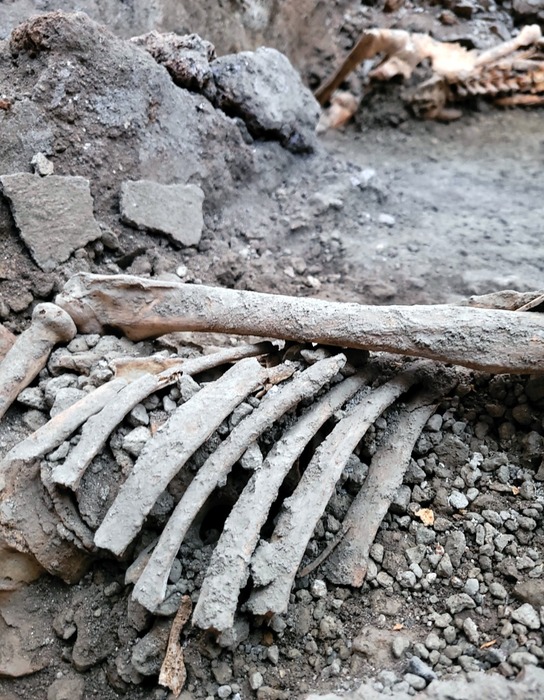
They were found lying on one side in a utility room, probably not in use at the time due to repairs or renovation work underway in the house, where they had taken refuge in search of protection.
The data from initial on-site anthropological analyses – published in the E-journal of the Pompeii excavations – show that both individuals probably died as a result of multiple traumas caused by the collapse of parts of the building.
They were probably two males who were at least 55 years old.
During the removal of the cervical vertebrae and skull of one of the two skeletons, traces emerged of organic matter, probably a bundle of fabric. As well as five elements of glass paste which can be interpreted as the beads of a necklace, six coins were found inside the bundle. Two silver denarii: a Republican denarius, which can be dated to the mid-second century BC, and another more recent denarius which can be identified as a coin minted during the reign of Vespasian. The remaining bronze coins (two sestertii, an ass and a quadrans) also date to the age of Vespasian and were therefore recently-minted.
“The discovery of the remains of these two Pompeians in the context of the construction site in the Insula of the Chaste Lovers shows how much there is still to discover about the terrible eruption of AD 79 and confirms the necessity of continuing scientific investigation and excavations. Pompeii is an immense archaeological laboratory that has regained vigour in recent years, astonishing the world with the continuous discoveries brought to light and demonstrating Italian excellence in this sector,” states the Minister of Culture, Gennaro Sangiuliano.
“Modern excavation techniques help to shed light on the inferno that over two days descended on Pompeii and led to the complete destruction of the city, killing many of its inhabitants: men, women and children. Using analysis and the latest methodologies, we can gain an insight into the final moments of those who lost their lives,” emphasises Gabriel Zuchtriegel, the Park Director. “During one of the discussions on the site, while the skeletons were being recovered, one of the archaeologists, gesturing towards the victims they were excavating, uttered a phrase that remained engrained in my memory and arguably encapsulates the history of Pompeii, when he stated, ‘this is who we are’. At Pompeii, the progress in archaeological techniques always reminds us of the human dimension of the tragedy. Indeed, it reveals it even more clearly.”
Several objects came to light in the room where the bodies lay, such as a upright amphora leaning against the wall in the corner near to one of the bodies and a collection of vessels, bowls and jugs stacked against the end wall. The most striking aspect is the evidence for the damage to the two walls, probably caused by the earthquakes that accompanied the eruption. Part of the south wall of the room collapsed, crushing one of the men whose raised arm offers a tragic image of his vain attempt to protect himself from the falling masonry. The conditions of the west wall demonstrate the tremendous force of the earthquakes that took place at the same time as the eruption: the entire upper section was detached and fell into the room, crushing and burying the other individual.
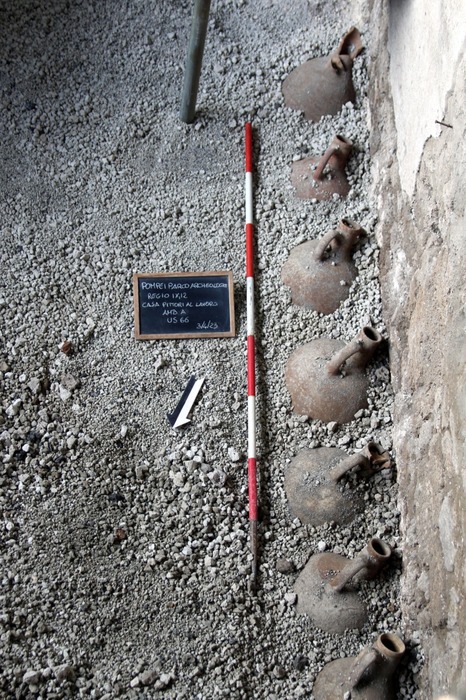
The adjoining room has a stone kitchen counter, which was temporarily out of use in AD 79: a pile of powdered lime waiting to be used for building purposes was found on the surface of the counter, suggesting that repair work was being carried out nearby at the moment of the eruption. A series of Cretan amphorae, originally used for transporting wine, were found alongside the wall of the kitchen. Above the kitchen counter were traces of a domestic shrine in the form of a fresco which appears to depict the household gods (lares) and a pot partly set into the wall which may have been used as a container for religious offerings. Next to the kitchen, there is a long narrow room with a latrine, the contents of which flowed into a drain beneath the street.
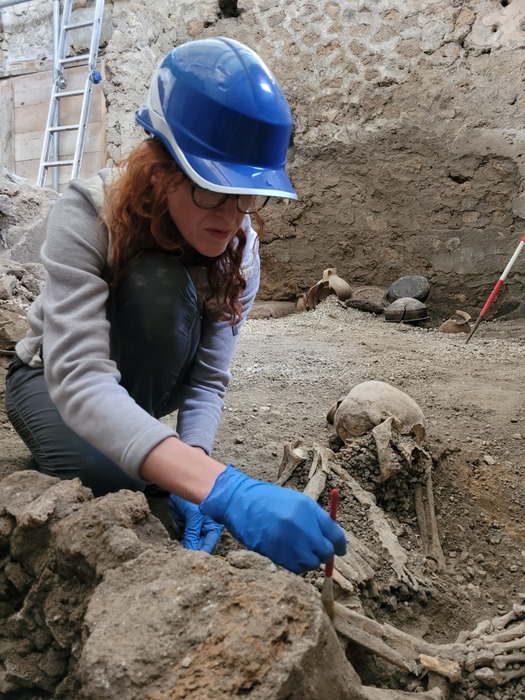
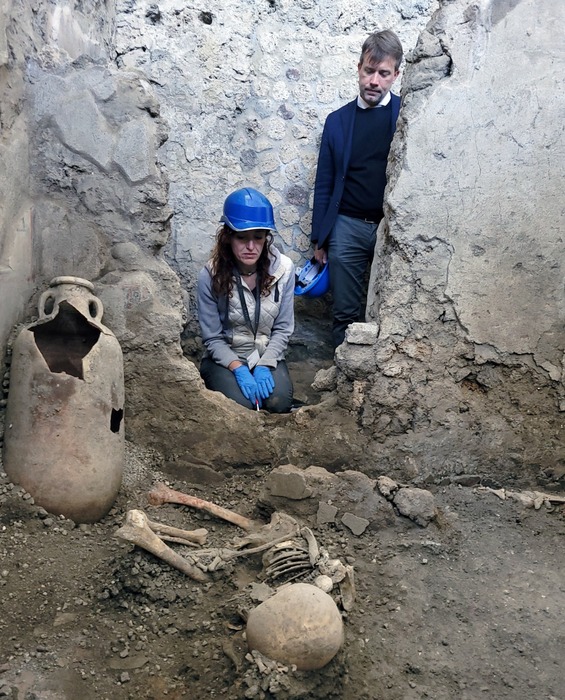
The scientific details of the excavation can be explored further through the articles published in the E-Journal of Pompeii – which can be downloaded from the official Park website www.pompeiisites.org – a new digital platform aimed at the scientific community and the general public and designed to provide information and preliminary reports concerning excavation, research and restoration projects in the Park.
______________________________________________________________
FOLLOW INDEPENDENT PRESS:
TWITTER (CLICK HERE)
https://twitter.com/IpIndependent
FACEBOOK (CLICK HERE)
https://web.facebook.com/ipindependent
Think your friends would be interested? Share this story!


